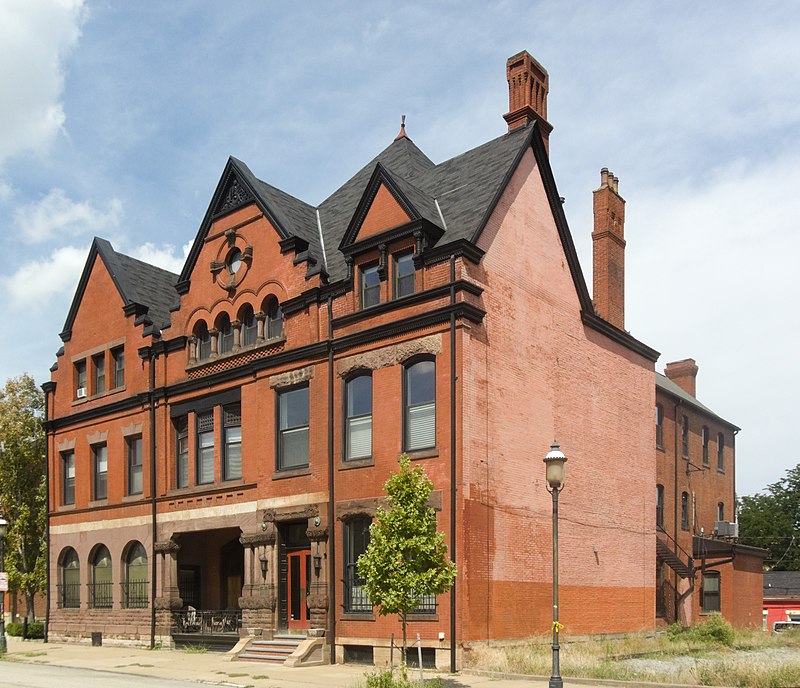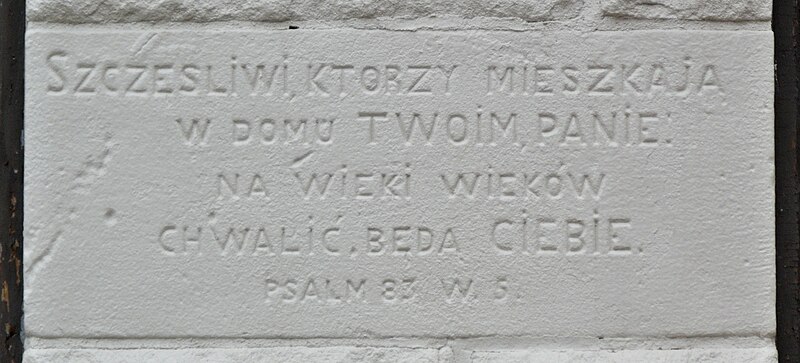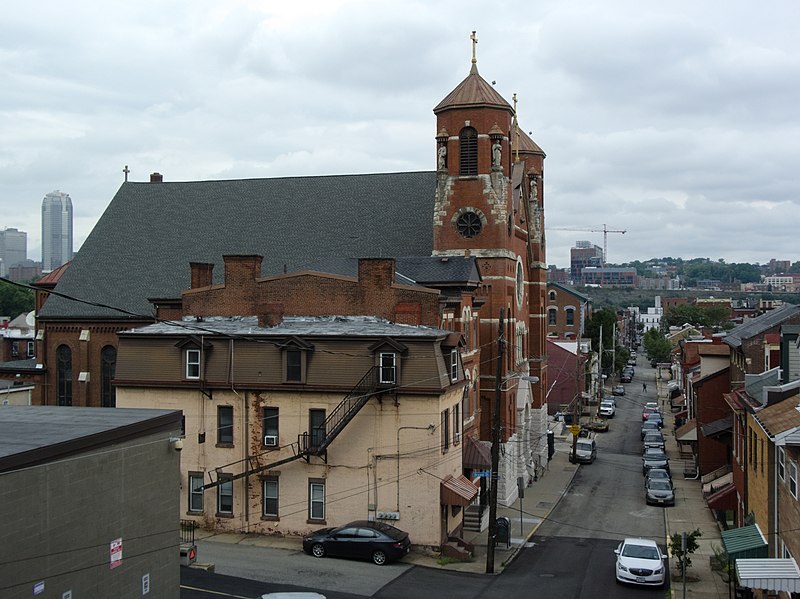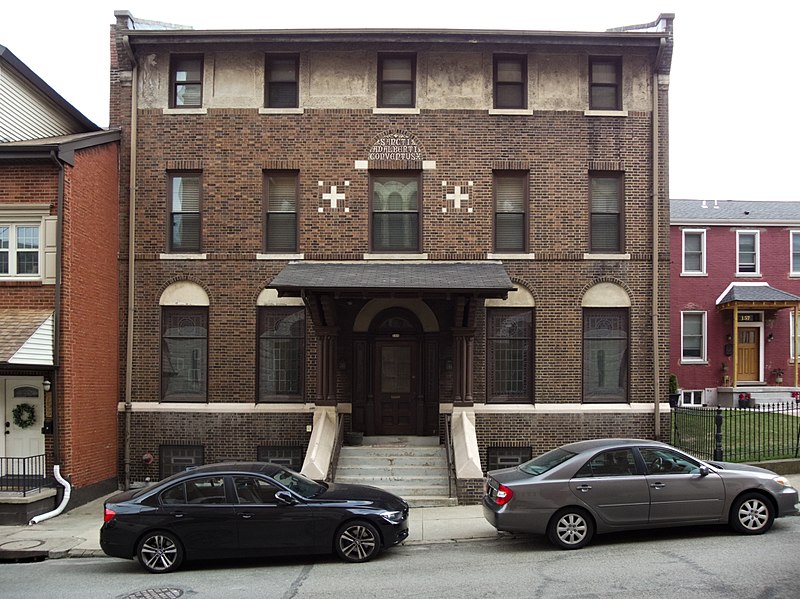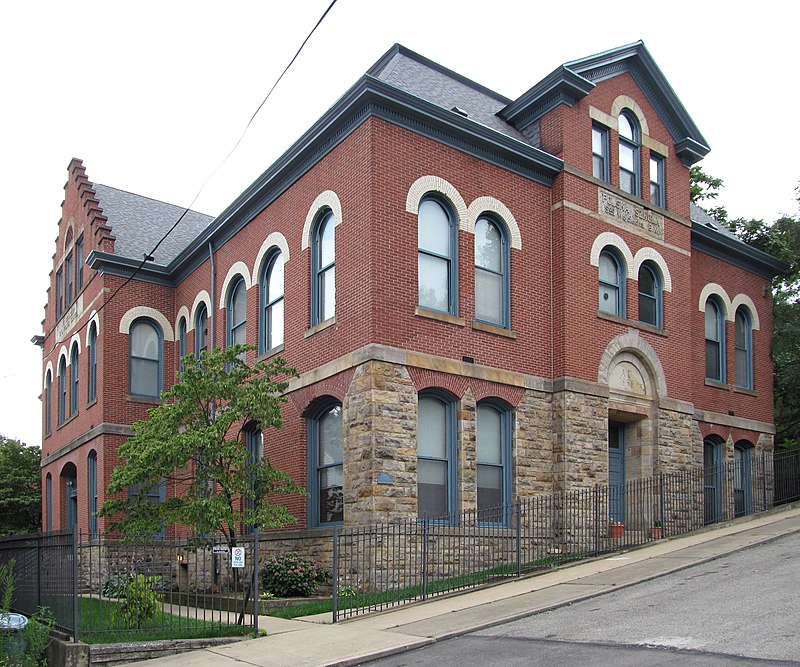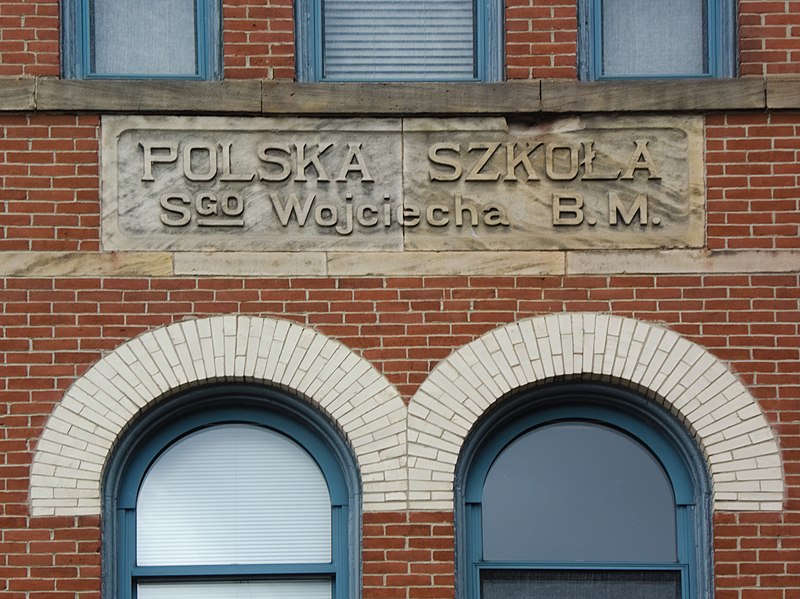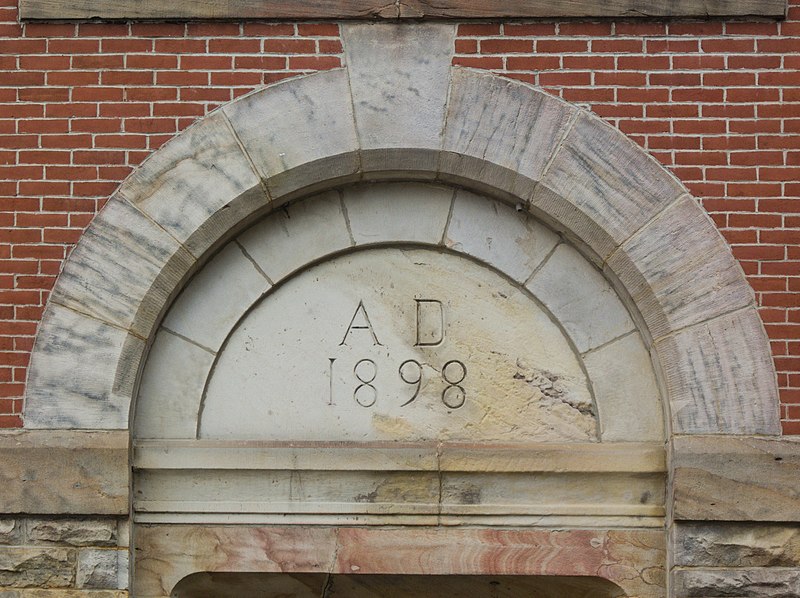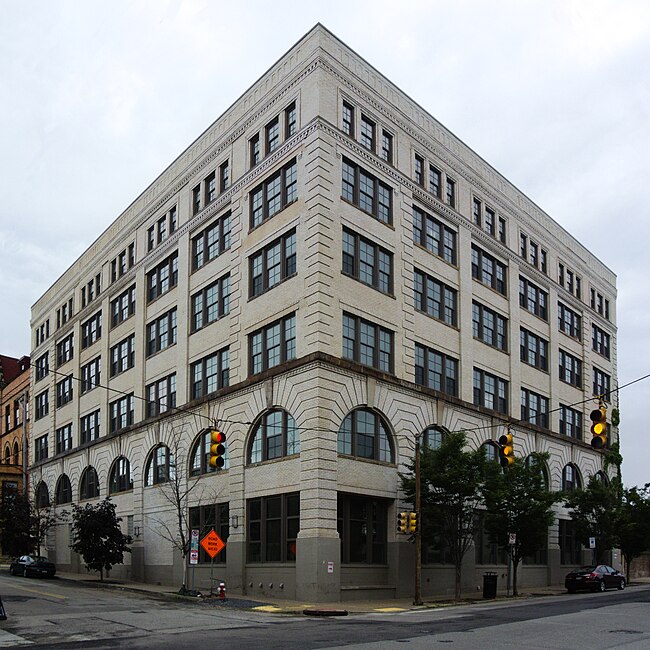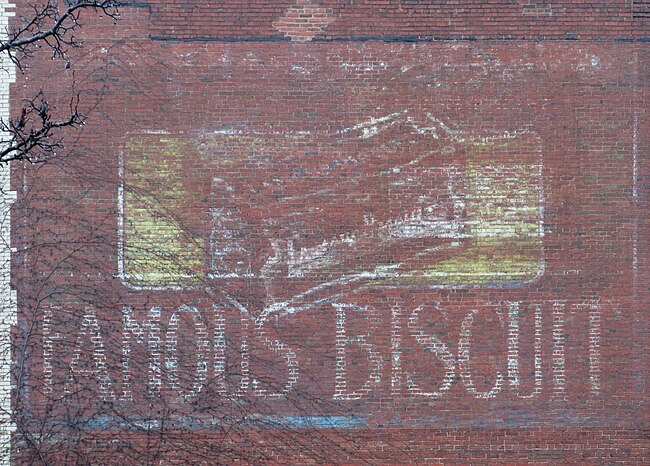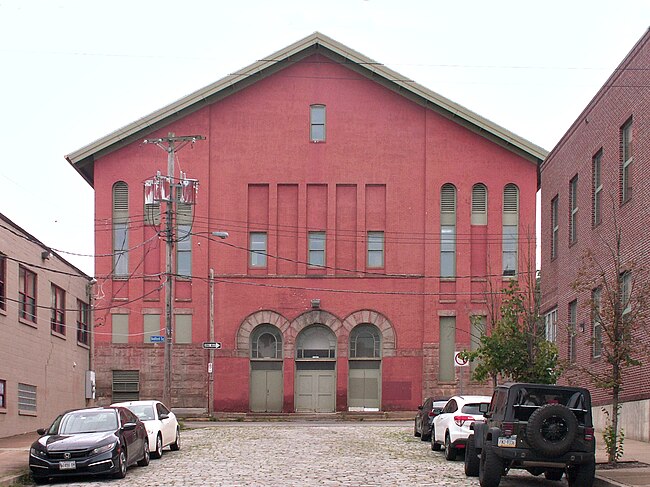
One of our endangered landmarks: it has been closed as a church for six years now, and no one seems to know what else to do with it. A community group wants to preserve it as a community resource, but it takes money to keep up a magnificent church. Allentown seems to be metamorphosing into a trendy neighborhood, but not very quickly into an expensive neighborhood—which is a good thing for the residents, but a bad thing for the prospect of making anything profitable out of this building.
Allentown was a German neighborhood, and this church was designed by a German architect (Herman J. Lang) for a German congregation. The church was finished in 1912. It has its own Wikipedia article, which identifies it as an example of “the German Romanesque architectural style, an American derivative of the Rundbogenstil style.” Father Pitt approves of that description, because he likes to say the word “Rundbogenstil.” We have pillaged most of the rest of our information from that article.















